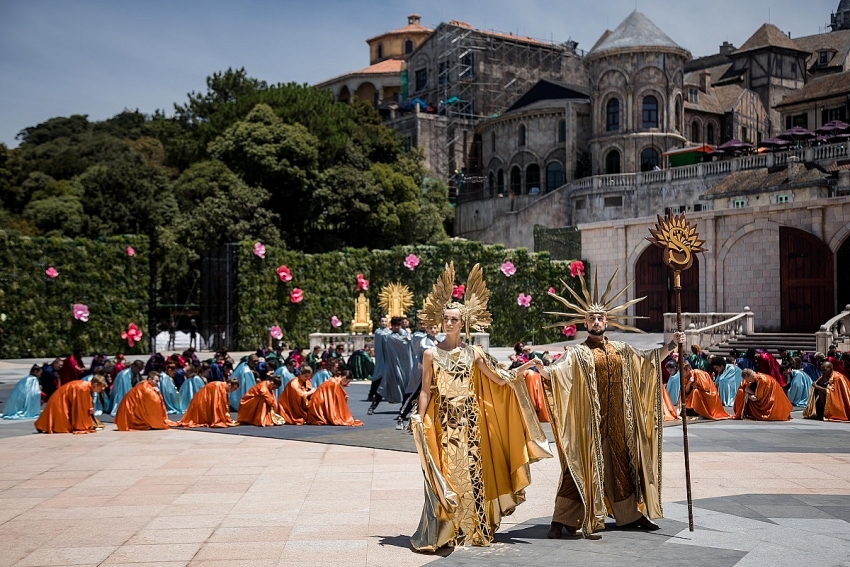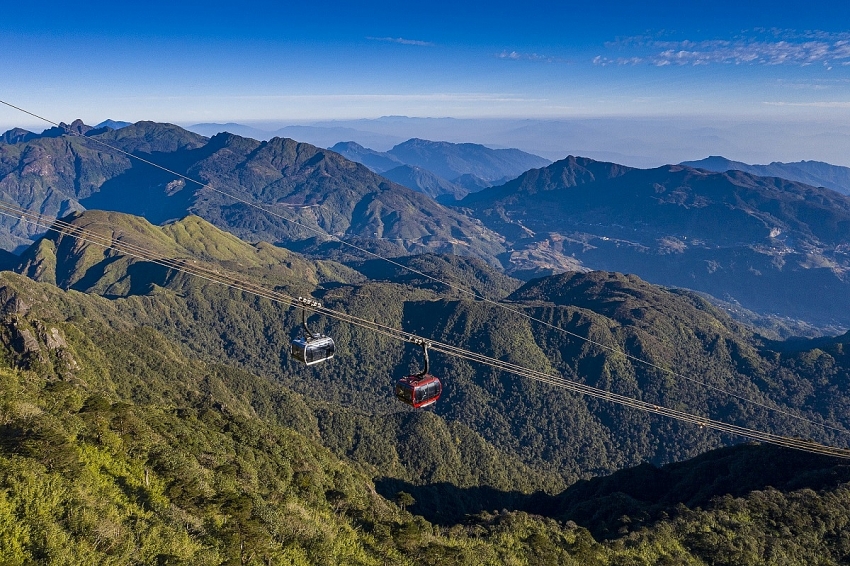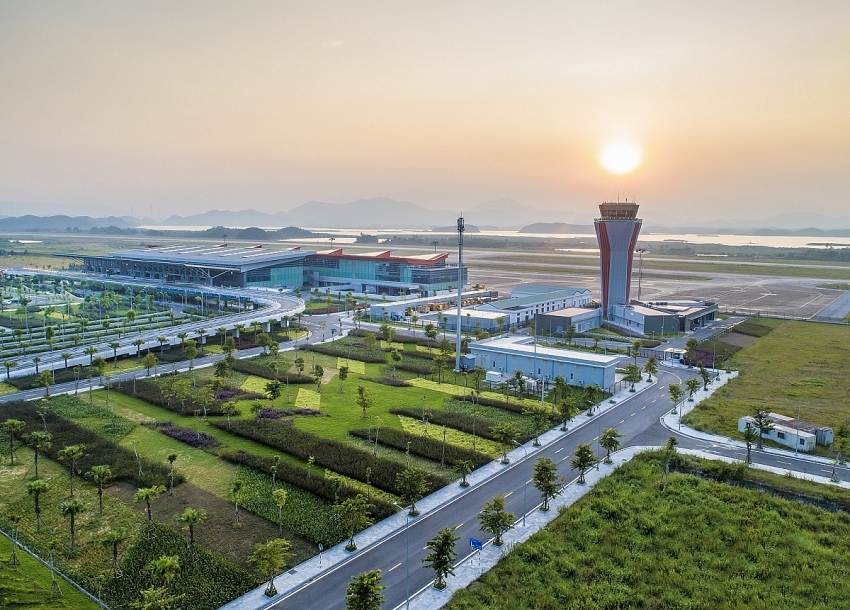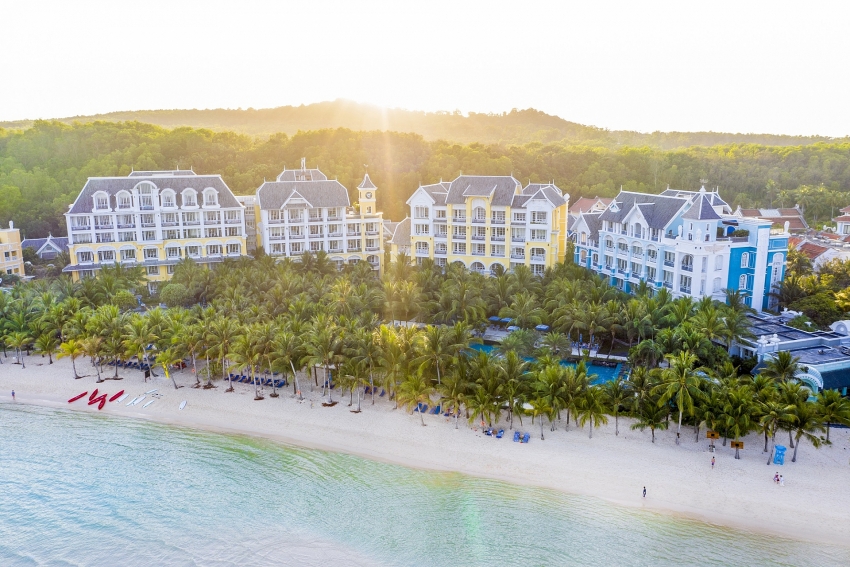How Vietnam became one of the world’s most talked about tourist destinations
 |
| Festival of Sunshine on Ba Na Hills |
Danang hits new heights
The story begins just over 10 years ago in Danang, a coastal city that was still a relatively unknown destination. In 2007, the whole city had less than 1,300 hotel rooms and received about 1 million domestic and international visitors. The airport served mostly as a hub for domestic flights and most tourists drove straight through the city down the coast to other destinations in Central Vietnam.
The turning point came when the city government called on major investors to join hands with the municipality and regenerate Danang. Responding to that clarion call, in 2007, Sun Group began developing a project in Ba Na – once a mountain retreat for French emigres in colonial times, but long since forgotten by the world and considered accessible only to the most fearless of travellers.
A year later, the Sun World Ba Na Hills tourism and entertainment complex came into operation as did a cable car route that ferried travellers up from the foot of the mountain. The impact was immediate. In 2009, more than 1.3 million visitors came to Danang, setting a new record for arrivals.
With world-class services, tourism products, entertainment, a high-end resort, and golf course, Ba Na Hills has continued to be a magnet for tourism. In 10 years, the resort has seen tourist numbers grow 160-fold. Especially, in 2018, when the iconic Golden Bridge – an amazing architectural creation – opened in Ba Na Hills, Danang experienced a huge spike in arrivals. Everyone wanted to "check-in" on the Golden Bridge with its two god-like hands cupping the structure.
In 2014, Sun Group unveiled their second game-changing investment in Danang – InterContinental Danang Sun Peninsula Resort on the heavenly Son Tra Peninsula. The astonishing resort was duly named the World’s Leading Luxury Resort by the World Travel Awards for four consecutive years from 2014 to 2017.
In the decade following the opening of Ba Na Hills, Danang’s tourism growth has been the envy of many other destinations. Last year, nearly 8.7 million visitors came to Danang, nearly five times higher than in 2010, while revenue from tourism reached VND30.973 trillion ($1.35 billion), 25 times higher than in 2010.
 |
| Fansipan cable car in Sapa |
Sapa returned to glory
In early 2016, the Fansipan cable car opened as part of the Sun World Fansipan Legend tourism complex in Sapa in North Vietnam, drawing the attention of travellers from all over the world. Invested and developed by Sun Group, the cable car set two world records in connecting Sapa town with the "rooftop of Indochina", the peak of Fansipan (3,143m).
A truly remarkable feat of engineering, it is no surprise tourist numbers to Sapa immediately started to rise but Sun Group had many more attractions to unveil, for example, the Muong Hoa funicular as well as a complex of spiritual buildings and monuments on the top of Fansipan. Tourists can also discover more about the unique cultural activities of numerous hill tribes who have lived on the mountains of the northwest for many hundreds of years at the Sun World Fansipan Legend tourism complex.
Again, the impact of these investments is clear. In 2013, Sapa only welcomed 720,000 visitors and mustered a revenue of VND576 billion ($25 million). By comparison, in 2019, the number of visitors to Sapa reached more than 3.2 million, while revenue hit VND9.335 trillion ($405.87 million), 16.2 times higher than in 2013.
In 2019, when Sun World Fansipan Legend was named “Vietnam's Leading Tourist Attraction” and “The World's Leading Cultural Tourist Attraction” at the World Travel Awards, it became official: Sapa is now a globally-recognised destination.
 |
| Van Don International Airport in Quang Ninh |
Quang Ninh – a magical and mythical land
At the end of 1994, Halong Bay in Quang Ninh province was recognised by the UNESCO as a world natural heritage site. But Halong city and Quang Ninh province remained undeveloped and unappealing for many tourists. For example, Bai Chay Beach in Halong city was a shabby-looking shoreline seafront. The standard of accommodation was very poor and there were no entertainment facilities of any kind.
The picture started to change in 2015 when Sun Group renovated Bai Chay and transformed it into a beautiful beach with white sand and shady coconut trees. A year later, Sun Group inaugurated the Sun World Halong Complex entertainment complex, which ended the long-held impression that in Halong was simply a day-trip destination. Now many tourists come for longer visits.
Sun Group also shrewdly invested in key transport infrastructure projects, which are all now in operation: Van Don International Airport, Halong International Cruise Port and Halong-Van Don Highway. Now Halong and Quang Ninh can welcome millions more international visitors every year.
25 years since being recognised as a global heritage by the UNESCO, the province is now thriving like never before. In 2019, the total number of tourist arrivals to Quang Ninh reached 14 million, of which, international visitors reached 5.7 million while revenue from tourism reached nearly VND29.487 trillion ($1.28 billion).
Compared to 2014, when Quang Ninh only welcomed 7.5 million visitors, including nearly 2.6 million international visitors, with the total revenue of VND5.5 trillion ($239.13 million), we can see how tourism has transformed the province.
 |
| JW Marriott Phu Quoc Emerald Bay |
Phu Quoc – now a paradise island
The beauty of Phu Quoc Island has never been in doubt. For many years, it has been compared to the likes of Phuket (Thailand), Bali (Indonesia), Boracay (Philippines), and even the Maldives. But even five years ago, Phu Quoc was still off the radar for many global travellers. In 2014, the island received only 586,000 visitors, generating a turnover of a little more than VND2.2 trillion ($95.65 million). The reality was the island lacked world-class resorts to compete with other destinations.
That’s when Phu Quoc opened its doors to hundreds of investors, including big corporations such as Sun Group and Vingroup. Now Phu Quoc is home to the "World's Leading Luxury Resort and Spa" (JW Marriott Phu Quoc Emerald Bay) and the "World's Leading Beach Villa Resort" (Premier Village Phu Quoc), and many other incredible resorts.
Visitors can now ride on the Hon Thom cable car – the longest over-the-sea cable car route in the world – from the main island of Phu Quoc to Thom Islet to experience crystal clear water of Trao beach with many water sports and discover the most modern water park in Southeast Asia, named Aquatopia.
The impact of these world-class resorts and amenities has been immense. In 2019, the number of tourists visiting Phu Quoc reached 5.1 million, nearly nine times the number in 2014. It has become a destination where billionaires, celebrities, and discerning luxury travellers frequently visit. Once a sleepy and little known island, thanks to strategic investment, Phu Quoc is now truly a rival for Bali, the Maldives, and Boracay.
Miraculous transformations
Looking at how Phu Quoc Island, Sapa, Quang Ninh, and Danang have all been transformed in the eyes of the world, thanks to the introduction of world-class resorts, entertainment complexes, cable car systems, and other unique products, tourism can be seen as a miracle-maker. Without tourism development, many beautiful lands and towns in Vietnam would be still standing quietly on the sidelines of the world.
What the stars mean:
★ Poor ★ ★ Promising ★★★ Good ★★★★ Very good ★★★★★ Exceptional
Related Contents
Latest News
More News
- The destinations powering Vietnam’s festive season travel demand (December 04, 2025 | 18:33)
- Vietnam named among the world’s most exciting winter destinations (December 04, 2025 | 15:10)
- Phu Tho emerges as northern Vietnam’s new tourism hub (December 01, 2025 | 17:00)
- Vietjet completes Airbus A320/A321 updates ahead of deadline (December 01, 2025 | 09:49)
- Vietjet resumes Con Dao flights from early December (November 28, 2025 | 15:24)
- Free tickets, Lunar New Year promotions on offer at Vietjet Mega Livestream (November 26, 2025 | 15:32)
- Scandinavian Airlines and Vietnam Airlines broaden agreement with new routes (November 25, 2025 | 17:04)
- Halong Cruise Port welcomes over 3,100 international visitors (November 12, 2025 | 18:06)
- Vietnam.travel climbs to second place in Southeast Asia website rankings (November 12, 2025 | 18:01)
- Cat Ba named among Southeast Asia’s top island adventures (November 11, 2025 | 18:09)

 Tag:
Tag:



























 Mobile Version
Mobile Version